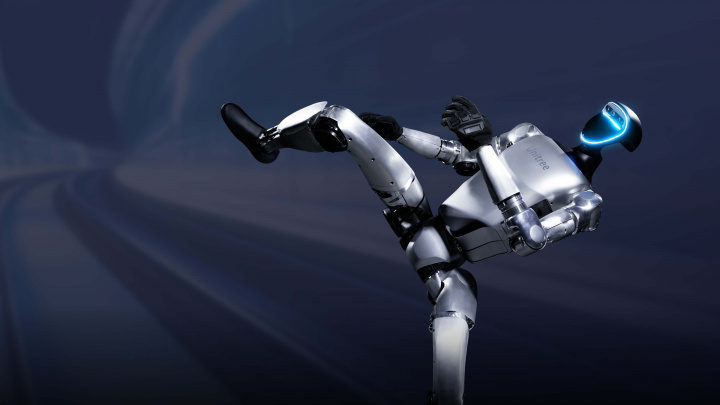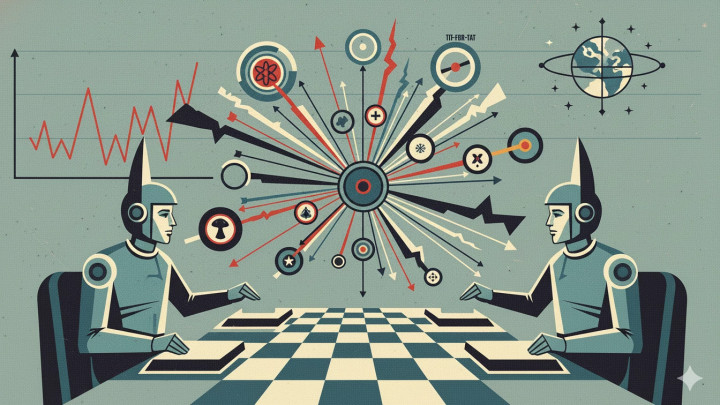Money, Power, and Society in the Long Waves of History
In a previous analysis, we identified technological revolutions as the primary engine of the long economic waves known as Kondratiev cycles. The steam engine, railways, electricity, and the microchip were all fundamental innovations that reshaped the global economy in recurring 50-to-60-year cycles. However, this technology-centric view tells only one part of the story—albeit a spectacular one. Behind the scenes, other equally powerful forces are at play: the flow of financial capital, the shifting tides of social mood, and the realignment of global power.

This article delves into these hidden dimensions of the Kondratiev waves, exploring how technological innovation is intertwined with financial speculation, how economic "seasons" are mirrored in our politics and society, and how each new wave can redraw the geopolitical map of the world.
The Double Dance of Financial Capital: Creation and Destruction
A technological revolution doesn't happen in a vacuum. For a promising invention to become a force that transforms the entire economy, it requires a massive injection of capital. This is where financial capitalism enters the picture, a role most vividly described by the neo-Schumpeterian economist Carlota Perez. In her model, each long wave is divided into two main periods: the Installation Phase and the Deployment Phase, separated by a critical Turning Point—typically a major financial crash.
- The Installation Phase: When a new technological paradigm emerges (like the internet in the 1990s), financial capital—speculative money seeking fast, high returns—pounces. This is the "spring" and "summer" of the cycle: a kind of gold rush where investors recklessly pour money into startups related to the new technology, often with little regard for stable business models or actual revenue. We saw this during the dot-com bubble of the late 1990s. The air is thick with optimism, but this phase is also the beginning of "creative destruction," as the new technology starts to threaten old industries. Inevitably, this frenzy of speculation leads to a bubble.
- The Turning Point: Eventually, the bubble bursts. The dot-com crash of 2000 and the even larger 2008 financial crisis are perfect examples of this turning point. These crises are incredibly painful, but according to Perez, they are also necessary. They cleanse the market of unviable companies and force a "reality check" on investors. The crash acts as a crucible, forging a more mature technology ready for widespread, practical application.
- The Deployment Phase: After the crisis, the focus shifts from speculation to production. Production capital (money invested in factories, infrastructure, and real products) takes the lead. The technology is no longer just a promise; it's being integrated into the core of the economy. This is when the great, stable corporations are built (in our era, think Google, Amazon, and Apple), and the benefits of the technology begin to spread to wider segments of society. This phase represents the "late summer" and "autumn" of the cycle—a "golden age" of prosperity and stability that eventually leads to market saturation and slowing growth, setting the stage for the next "winter."
This model explains why great technological leaps are so often inseparable from seemingly irrational financial bubbles and the devastating crashes that follow.
A Mirror to Society: Economic Seasons and Political Storms
Kondratiev waves don't just leave their mark on economic charts; they profoundly influence social mood and political dynamics. The economic "seasons" are almost perfectly mirrored in the collective psyche.
- Spring and Summer: The early stages of the cycle are characterized by social optimism. There is a widespread belief in progress, and social mobility—the dream of rising from rags to riches—feels like a tangible possibility. A growing economy strengthens the middle class, which typically fosters political stability. Debates tend to be about how to distribute the expanding pie, not about questioning the foundations of the system itself. Think of the post-WWII decades in the Western world.
- Autumn and Winter: As the cycle matures and enters its final stages, growth slows, markets saturate, and profit margins shrink. Companies focus on cost-cutting and efficiency, which often leads to job losses and wage stagnation. At the same time, the returns on capital often outpace economic growth, leading to a dramatic increase in social inequality. People begin to feel the "game is rigged" and that the social contract has been broken. This breeds an era of pessimism, distrust, and anger, providing fertile ground for populist movements, political polarization, and radical challenges to the status quo. The current political tensions, the backlash against globalization, and the erosion of faith in democratic institutions across the West are not random events; they are classic symptoms of a Kondratiev winter.
The Tides of Hegemony: Geopolitical Shifts
The impact of Kondratiev waves is also felt on the international stage. Historically, the nation that most successfully masters and deploys the technology of a new wave often rises to a position of global hegemony. The new technological paradigm provides not only economic dominance but also military and cultural supremacy.
- The First and Second Waves (steam, rail) coincided with the rise of Great Britain. Its factories, navy, and global trade network made it the undisputed dominant power of the 19th century.
- The Third, Fourth, and Fifth Waves (electricity, oil, the automobile, information technology) ushered in the dominance of the United States. American mass production, technological innovation (Silicon Valley), and financial might (Wall Street) made the 20th century the "American Century."
This raises one of the most critical geopolitical questions of our time: who will lead the Sixth Wave? While forecasting is a risky business, the signs clearly point to a new contest for technological leadership.
- China is making a deliberate, state-funded push to dominate the key technologies of the Sixth Wave, particularly in artificial intelligence, green energy, and biotechnology. Beijing's ambition is nothing less than to break American technological hegemony.
- However, the United States still possesses an extraordinary capacity for innovation and remains at the forefront of many foundational technologies. The outcome of this competition is far from decided.
Some analysts cautiously suggest that the Sixth Wave might not produce a single hegemon but instead foster a multipolar world order, with multiple centers of technological and economic power competing and collaborating. This geopolitical realignment is likely to be one of the defining stories of the 21st century.
In Conclusion
Understanding Kondratiev waves takes us beyond a simple analysis of technology and economics. It offers a powerful lens through which to view the deepest social tensions and geopolitical shifts of our time. The euphoria and panic of financial markets, the rise of political polarization, and the competition between great powers are not isolated events but parts of a larger, cyclical pattern. The uncertainty and turmoil of our current "winter" may well be the inevitable growing pains of a new techno-economic era. Recognizing this pattern doesn't provide easy answers, but it helps us ask the right questions as we stand on the cusp of history's next great wave.





